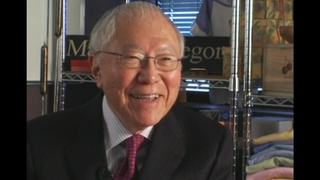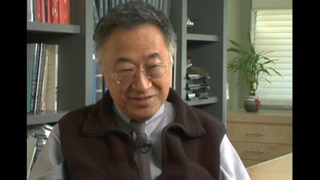Interviews
Differences in discrimination
The only time we got discrimination is when we went to medical school, cause…of course you know, medical school discriminated against women. But I think because I was oriental in Chicago, where they never saw an Oriental, I think I was sort of a curio to them, you know. They wondered what I was like. And when I went to Chicago, there was no discriminationing – in restaurants or anywhere…nightclubs or…like it was here in Los Angeles, you know. We were completely discriminated against, many places. We’d go to a restaurant and they wouldn’t wait on us. But when I went to Chicago, I was at first a little reluctant about going to those places, but I was accepted and so then I got used to going to those nightclubs and restaurants and so on.
Date: March 31, 2005
Location: California, US
Interviewer: Gwenn M. Jensen
Contributed by: Watase Media Arts Center, Japanese American National Museum
Explore More Videos

Strict school policy of separating boys and girls in Japan
(b.1920) Japanese Canadian Nisei. Established the Ikenobo Ikebana Society of Toronto

Undergraduate studies interrupted following Pearl Harbor
(b. 1921) Nisei businessman. Established "Made in Oregon" retail stores

Difficulty getting work during World War II
(b. 1921) Nisei businessman. Established "Made in Oregon" retail stores

His experiences in Chicago after WWII
(b.1929) Pioneer medical researcher in tissue transfer and organ transplantation.


Discharged from the U.S. Army after Pearl Harbor
(b. 1918) Founder Azumano Travel

Differing responses by gender to the Hapa Project
(b. 1965) filmmaker and artist


Stereotypes about Japanese: past and present (Spanish)
(b. 1937) Professional journalist

Reaction to a 1942 speech by Mike Masaoka, Japanese American Citizen League's National Secretary
(1915 - 2011) Nisei florist who resettled in New York City after WW II. Active in Japanese American civil rights movement

First impression of New York City during war time
(1915 - 2011) Nisei florist who resettled in New York City after WW II. Active in Japanese American civil rights movement

Neighbors' sympathy after Pearl Harbor
(1915 - 2011) Nisei florist who resettled in New York City after WW II. Active in Japanese American civil rights movement

Interest in Japanese migration studies (Japanese)
Tsuda College President, researcher of Nikkei history

American influences on Japanese taiko
Senshin Buddhist Temple minister and co-founder of Kinnara Taiko.

Experiencing discrimination as a child
Co-founder and creative director of San Jose Taiko
